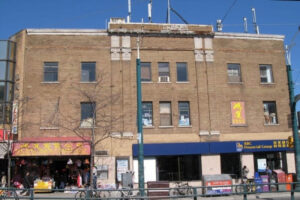We Finally Have More People Living Pre-Amalgamation Toronto 1971
Ah, Toronto. From its majestic skyline to the intricate weave of its communities, Toronto has always been an evolving city. But did you know that the population dynamics of this bustling metropolis are now mirroring those of pre-amalgamation in 1971? Hold onto your hat, because this will be a journey down memory lane, interspersed with contemporary revelations. By the time we’re done, you’ll see Toronto in a light you perhaps never imagined.
The Magic of 1971
For those scratching their heads at the term “pre-amalgamation”, let’s break it down a bit. Amalgamation was the process where in 1998, Toronto merged with five other municipalities to form a single city. But why does 1971 matter?
In 1971, Toronto was, well, pretty dang cool. There was a vibe—a pulse that captured the hearts of many. People from various walks of life converged in this hub, painting a colorful tapestry of culture, innovation, and, most importantly, community. This year was a watershed moment; the city’s population dynamics then have become an intriguing point of reference for today’s demographic changes.
The Population Puzzle: Then vs. Now
By comparing the population of 1971’s Toronto to today, we notice some pretty wild patterns. Here’s a bit of a breakdown:
-
Diversity in Neighborhoods: Back then, unique cultural hubs like Little Italy, Chinatown, and Greektown flourished. Fast forward to today, and we’re seeing a resurgence in the prominence of these ethnic enclaves. It’s like déjà vu, but with a modern twist!
-
Urban Density: If you’re thinking, “Gee, it feels a tad more crowded nowadays,” you’re not wrong! The population density in core areas of Toronto is reminiscent of those pre-amalgamation days.
-
Migration Patterns: Back in the day, Toronto was a magnet for folks all around Canada and beyond. Guess what? That hasn’t changed a bit! The city remains a beacon for those seeking opportunity, adventure, and a taste of the cosmopolitan life.
The Implications of This Resurgence
So, what does this mean for us now? Why should we care that our population is looking a lot like it did back in 1971?
-
Housing and Infrastructure: We’ve got more souls in the city, which means our infrastructure needs a keen eye. Roads, public transport, housing—all these require careful planning to accommodate this surge.
-
Cultural Revival: With the revival of ethnic enclaves, we’re witnessing a renaissance in art, food, and festivities. It’s a golden age for anyone looking to immerse themselves in Toronto’s rich cultural tapestry.
-
Economic Opportunities: More people? That’s a larger workforce, more consumers, and a potentially booming economy. Entrepreneurs, take note!
Beyond the Numbers: Stories of the Streets

Behind every statistic, there’s a story. Remember Aunt Mabel who always reminisced about the good ol’ days of Toronto? Well, it’s not just nostalgia; it’s the stories of people that paint the true picture of a city.
-
Community Bonds: Back in 1971, communities were tight-knit. Neighbors knew each other by name, and streets echoed with the sounds of kids playing. Fast forward to today, and in many pockets of the city, we’re seeing that camaraderie reborn.
-
The Pulse of the Marketplace: Kensington Market in the ’70s? A bustling hub of activity. Today, it still retains its charm, with echoes of the past reverberating in its alleys and by-lanes.
Looking Forward: What Lies Ahead for Toronto?
Predicting the future isn’t our forte, but by looking at patterns, we can make some educated guesses. With Toronto’s population reflecting the dynamism of the pre-amalgamation era, we can anticipate:
- A renewed focus on community-driven initiatives.
- An increased emphasis on celebrating multiculturalism.
- Potentially, a shift in policies to accommodate the growing population.
For all the number-crunchers and history buffs out there, this is a fascinating time to be in Toronto. And for the rest of us? It’s a chance to be part of a city that’s reliving its golden age, with a sprinkle of the 21st century on top.
Are we ready to embrace the old, celebrate the new, and look forward to a future that’s as vibrant as our past? Toronto awaits your answer.
For a detailed look at Toronto’s history, check out this comprehensive guide on Wikipedia.







